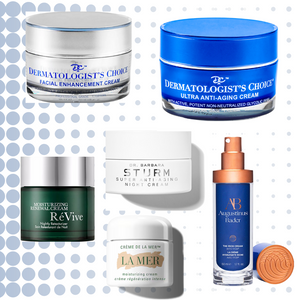Chemical peels are a popular and effective way to improve the appearance of the skin, but with so many different acids and strengths available, it can be difficult to know which one is right for you. When it comes to selecting a chemical peel at home, it's important to consider your skin type, color, and concerns.

For those with sensitive skin, it's best to start with a mild peel such as lactic acid or glycolic acid. These alpha hydroxy acids (AHAs) gently exfoliate the skin and can improve the appearance of fine lines, uneven pigmentation, and acne. If you have oily or acne-prone skin, salicylic acid may be a good option as it is a beta hydroxy acid (BHA) that can penetrate deep into the pores to unclog them and reduce breakouts.
For those with darker skin tones, it's important to use caution with chemical peels as they can increase the risk of hyperpigmentation. Mild peels such as glycolic acid can be a good option if used in mild strengths. Dr. B. recommends the Dermatologist's Choice Facial Enhancement Cream with mild glycolic acid and rich cream.
For people wanting more than a superficial chemical peel Dermatologist's Choice Ultra Antiaging Cream or Dermatologist's Choice TCA Advanced Peel Solution is a great choice for wrinkles and aging skin.
For those concerned with wrinkles and aging skin, medium-depth peels such as trichloroacetic acid (TCA) may also be a good option. A study published in the Journal of the American Academy of Dermatology found that a series of TCA peels improved the appearance of fine lines and wrinkles in participants.
Chemical peels can also be used to improve the appearance of the skin on other areas of the body such as the back of the arms and legs for reduction of keratosis pilaris, on the back for acne or other related skin concerns on the body.
It's important to keep in mind that at-home chemical peels should be used with caution as improper use can cause irritation, redness, and even permanent damage to the skin. It is also important to use sunscreen after a chemical peel to avoid sun damage. While this is unlikely with Dermatologist's Choice products consult your Dermatologist if you experience excessive side effects. Dr. B. notes, "some redness and dryness is good. It means the acid is being absorbed deeper for better results."
In conclusion, when it comes to selecting a chemical peel at home, it's important to consider your skin type, body area, and concerns. For those with sensitive skin, a mild peel such as lactic acid or glycolic acid may be a good option. For those with darker skin tones, mild peels such as glycolic acid may be a good option. For those concerned with wrinkles and aging skin, medium-depth peels such as trichloroacetic acid (TCA) may be a good option.
Chemical peels can also be used to improve the appearance of the skin on other areas of the body such as the back of the arms and legs for reduction of keratosis pilaris, on the back for acne or other related skin concerns on the body. It's important to use caution and under the guidance of a skincare professional, and always use sunscreen after a chemical peel to avoid sun damage.
References:
- Journal of the American Academy of Dermatology, "Trichloroacetic acid peels for the treatment of wrinkles and skin pigmentation"



